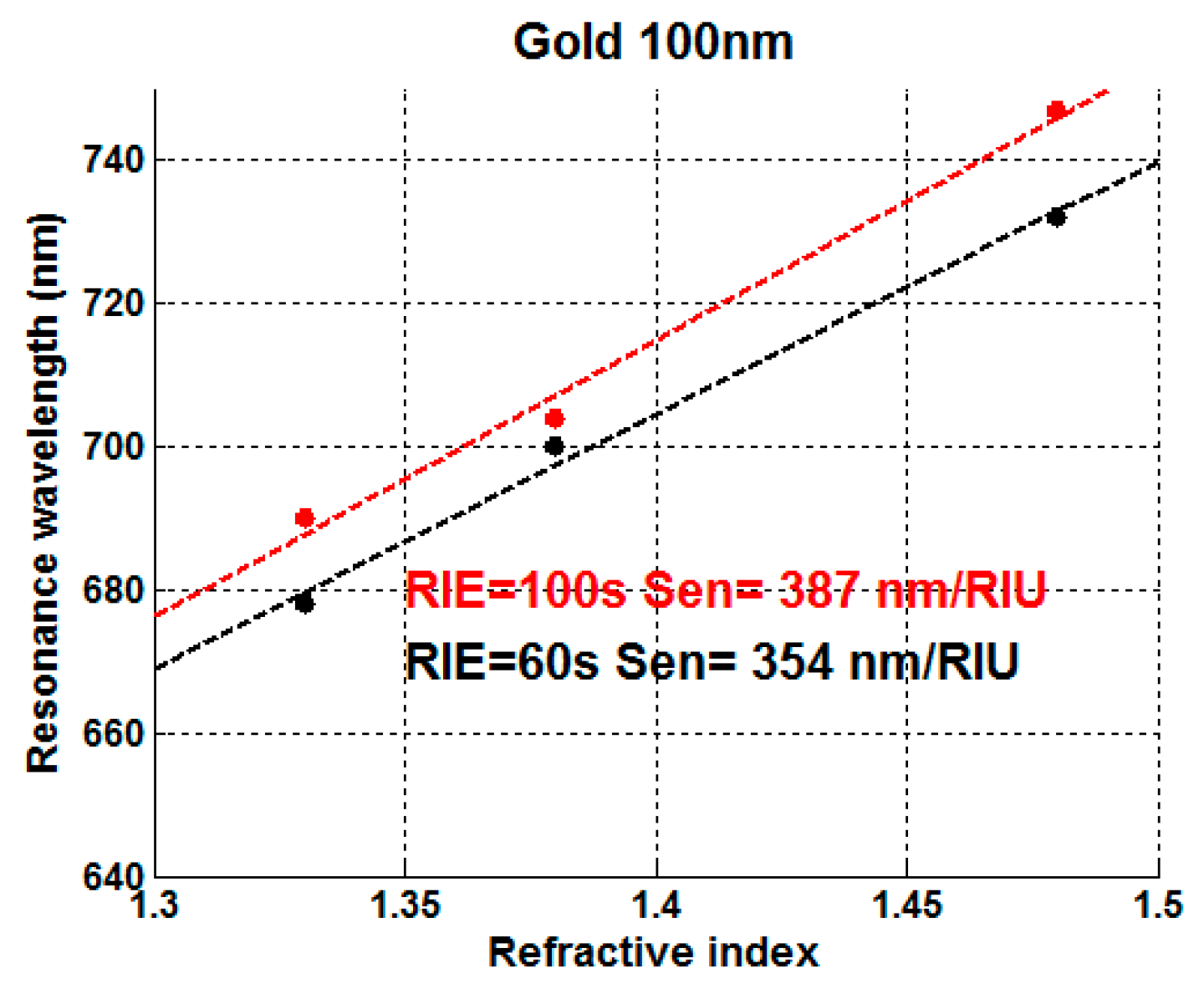Laser Interferometry for Broad Area SPR-Grating Couplers in Chemical Applications †
Abstract
:1. Introduction
2. Materials and Methods
2.1. Fabrication Process
2.2. Instrumentation
3. Results
3.1. Optical Characterization
3.2. Bulk Characterization
4. Conclusions
Acknowledgments
Conflicts of Interest
References
- Homola, J. (Volume Ed.); Surface Plasmon Resonance Based Sensors; Series on Chemical Sensors and Biosensors: Methods and Applications; Springer: Berlin/Heidelberg, Germany, 2006. [Google Scholar]
- Rodríguez-Franco, P.; Arriola, A.; Darwish, N.; Jaramillo, J.J.; Keshmiri, H.; Tavera, T.; Olaizola, S.M.; Moreno, M. Fabrication of broad area optical nanostructures for high throughput chemical sensing. Sens. Actuators B Chem. 2013, 187, 356–362. [Google Scholar] [CrossRef]
- Kumari, S.; Mohapatra, S.; Moirangthem, R.S. Nano-imprint gold grating as refractive index sensor. AIP Conf. Proc. 2016, 1728, 020539. [Google Scholar] [CrossRef]





Publisher’s Note: MDPI stays neutral with regard to jurisdictional claims in published maps and institutional affiliations. |
© 2017 by the authors. Licensee MDPI, Basel, Switzerland. This article is an open access article distributed under the terms and conditions of the Creative Commons Attribution (CC BY) license (https://creativecommons.org/licenses/by/4.0/).
Share and Cite
Moreno-Sereno, M.; Pérez, N.; Domenech-Gil, G.; Parellada-Monreal, L.; Martínez-Calderón, M.; Gómez-Aranzadi, M.; Darwish, N.; Mandayo, G.G.; Romano-Rodriguez, A. Laser Interferometry for Broad Area SPR-Grating Couplers in Chemical Applications. Proceedings 2017, 1, 323. https://doi.org/10.3390/proceedings1040323
Moreno-Sereno M, Pérez N, Domenech-Gil G, Parellada-Monreal L, Martínez-Calderón M, Gómez-Aranzadi M, Darwish N, Mandayo GG, Romano-Rodriguez A. Laser Interferometry for Broad Area SPR-Grating Couplers in Chemical Applications. Proceedings. 2017; 1(4):323. https://doi.org/10.3390/proceedings1040323
Chicago/Turabian StyleMoreno-Sereno, Mauricio, Noemi Pérez, Guillem Domenech-Gil, Laura Parellada-Monreal, Miguel Martínez-Calderón, Mikel Gómez-Aranzadi, Nasser Darwish, Gemma G. Mandayo, and Albert Romano-Rodriguez. 2017. "Laser Interferometry for Broad Area SPR-Grating Couplers in Chemical Applications" Proceedings 1, no. 4: 323. https://doi.org/10.3390/proceedings1040323
APA StyleMoreno-Sereno, M., Pérez, N., Domenech-Gil, G., Parellada-Monreal, L., Martínez-Calderón, M., Gómez-Aranzadi, M., Darwish, N., Mandayo, G. G., & Romano-Rodriguez, A. (2017). Laser Interferometry for Broad Area SPR-Grating Couplers in Chemical Applications. Proceedings, 1(4), 323. https://doi.org/10.3390/proceedings1040323




